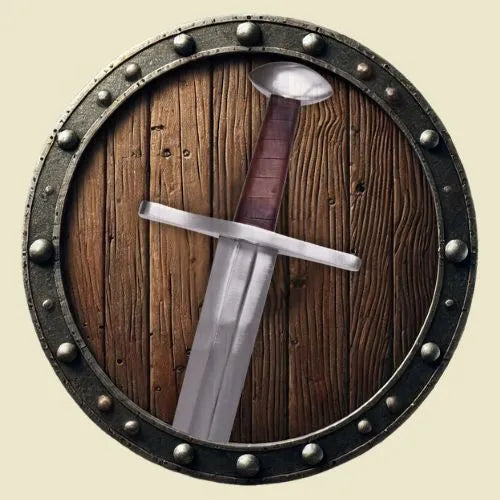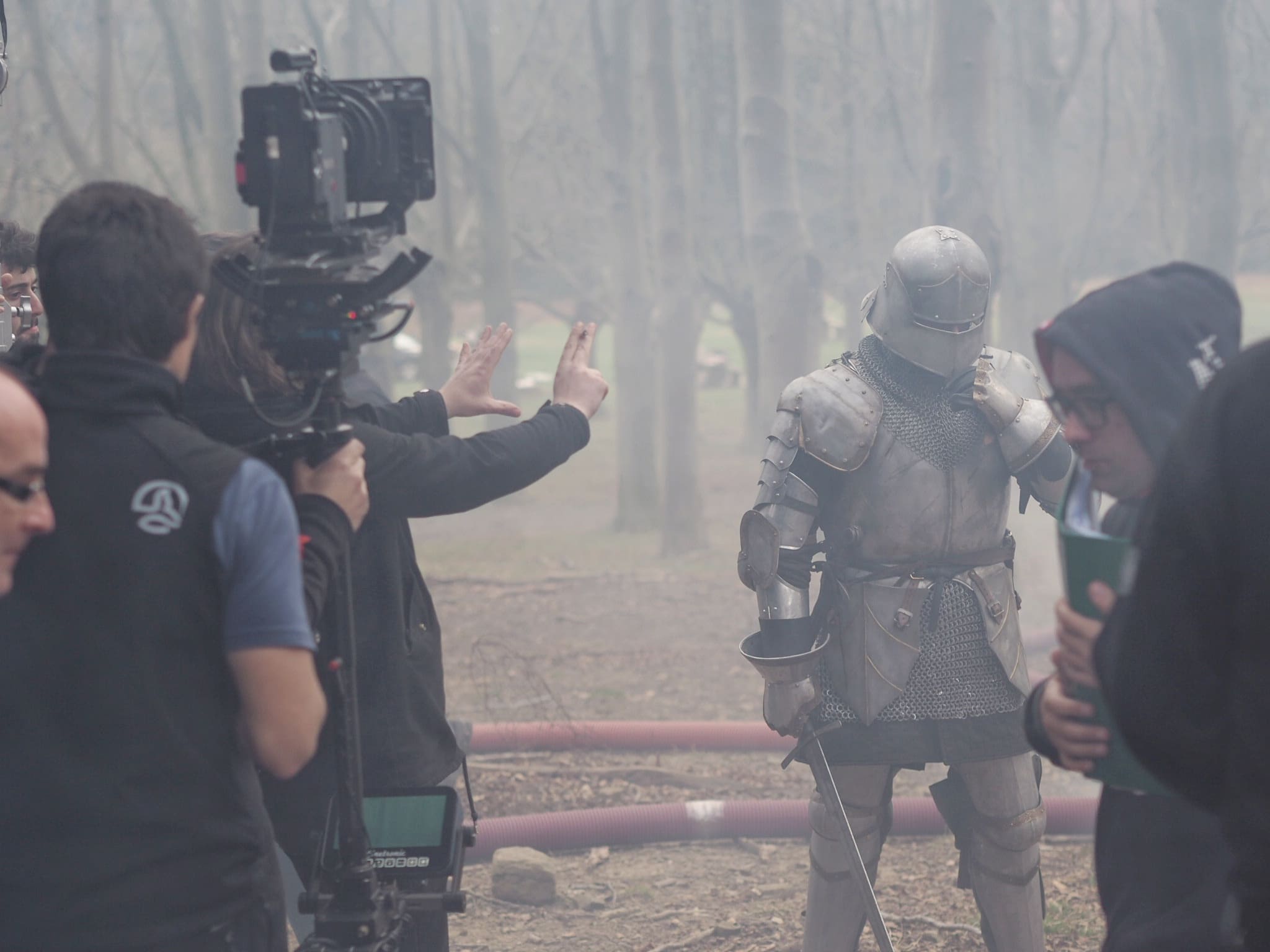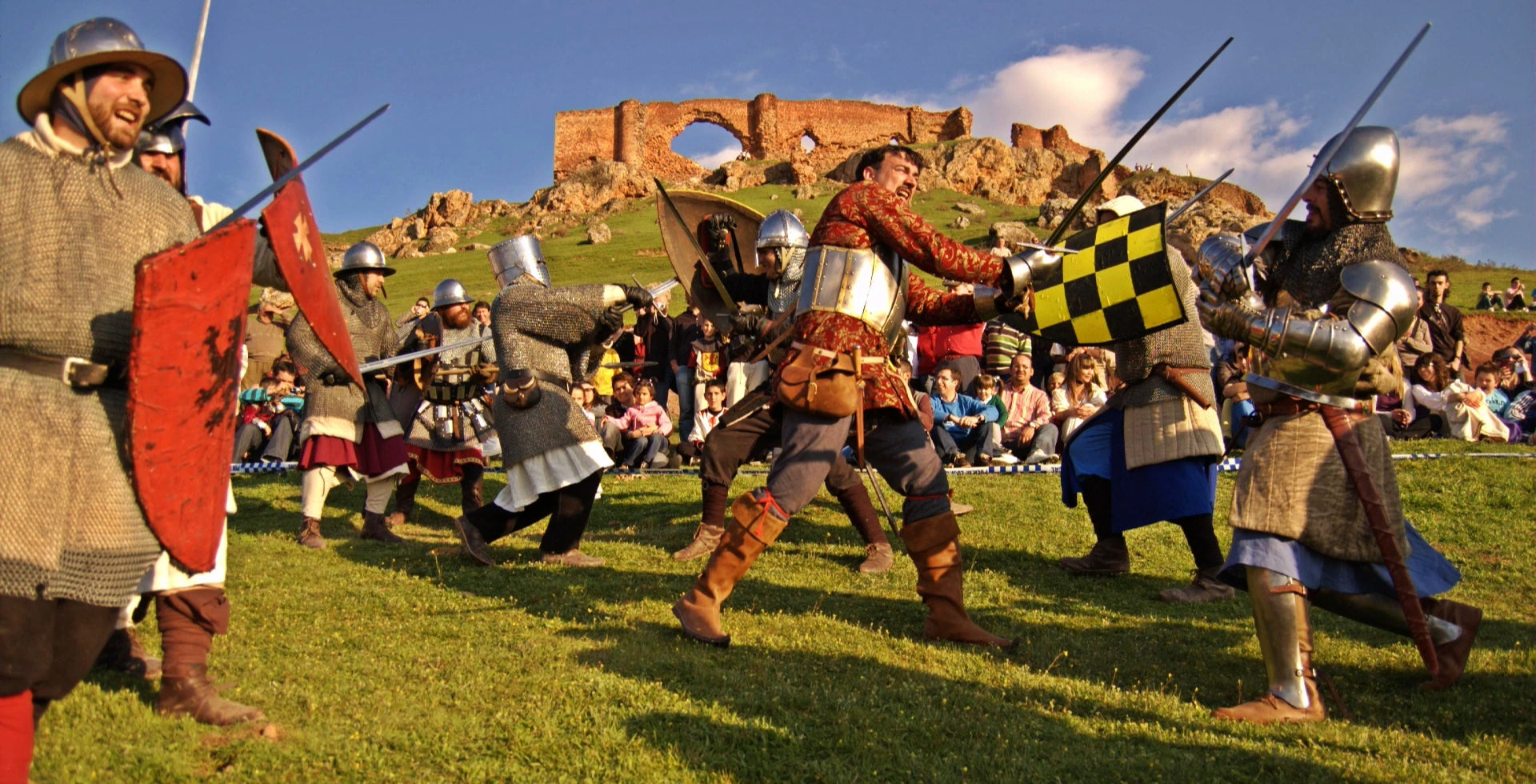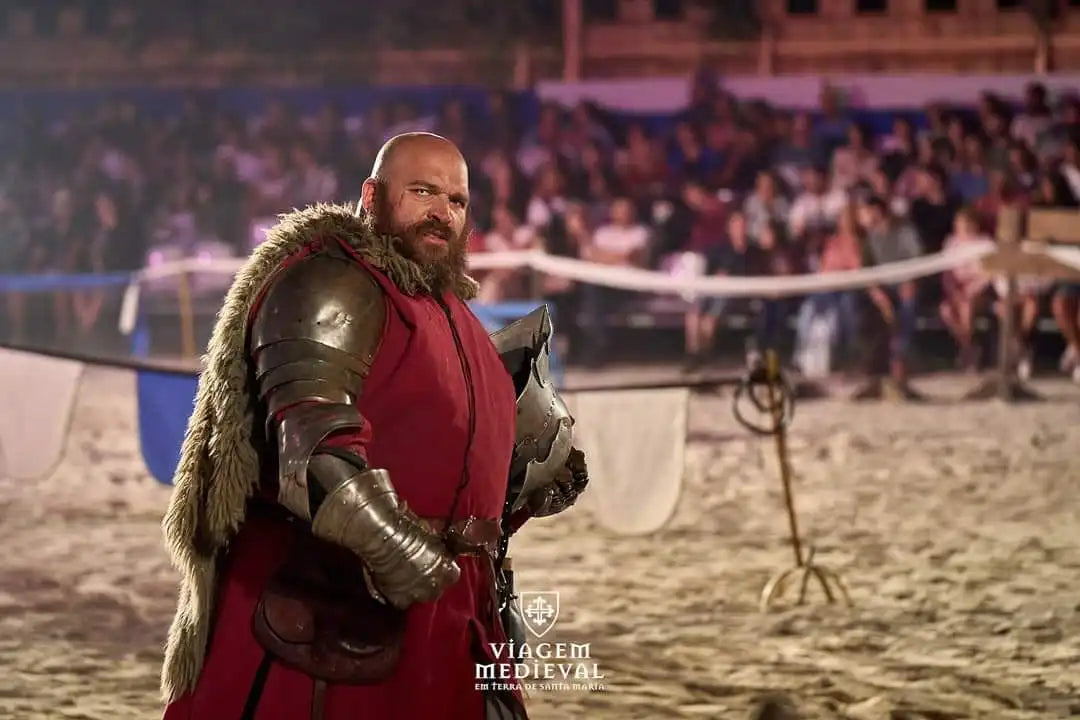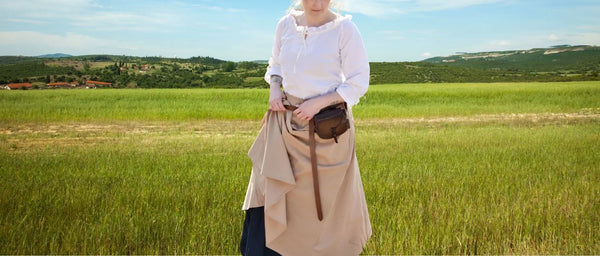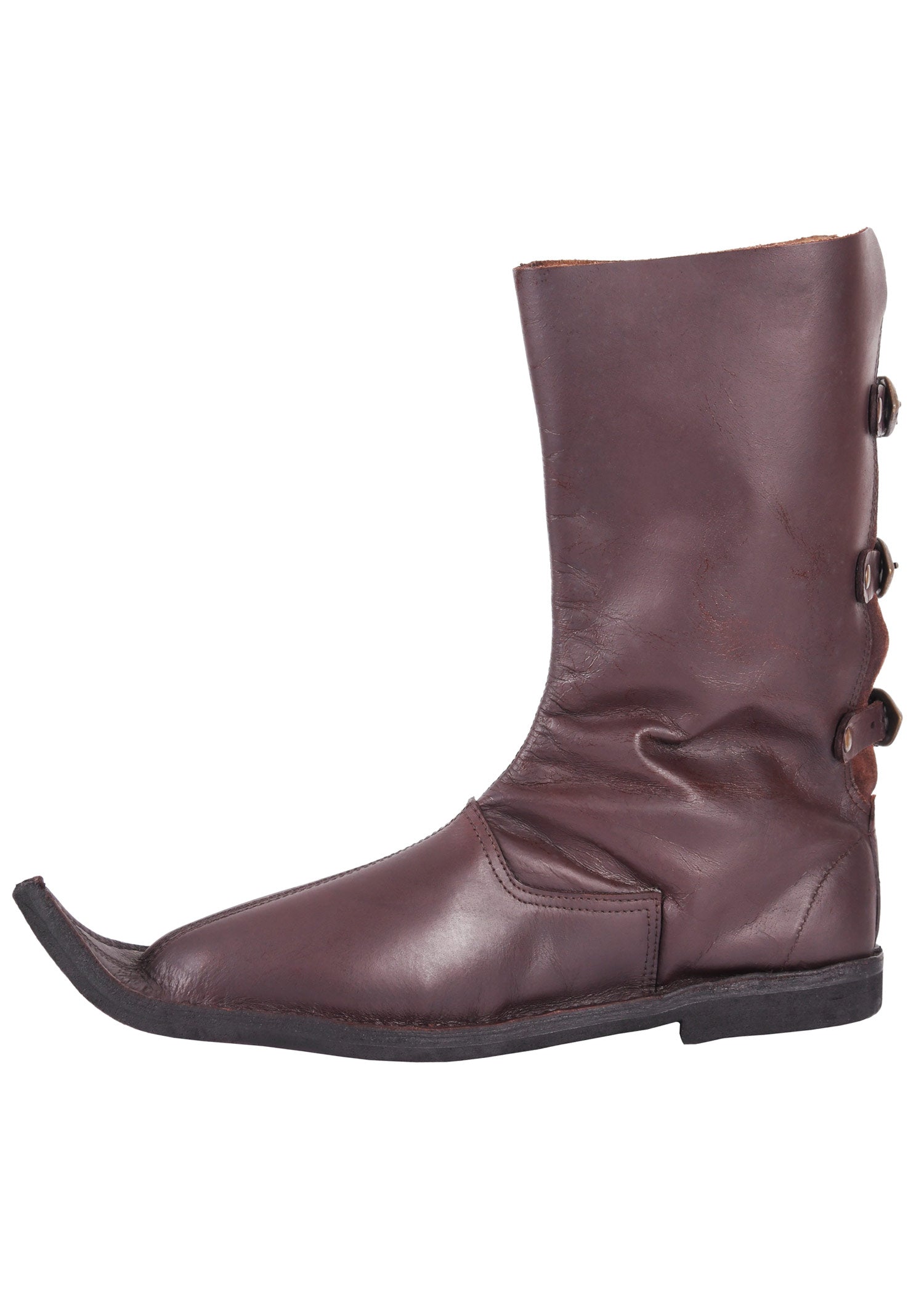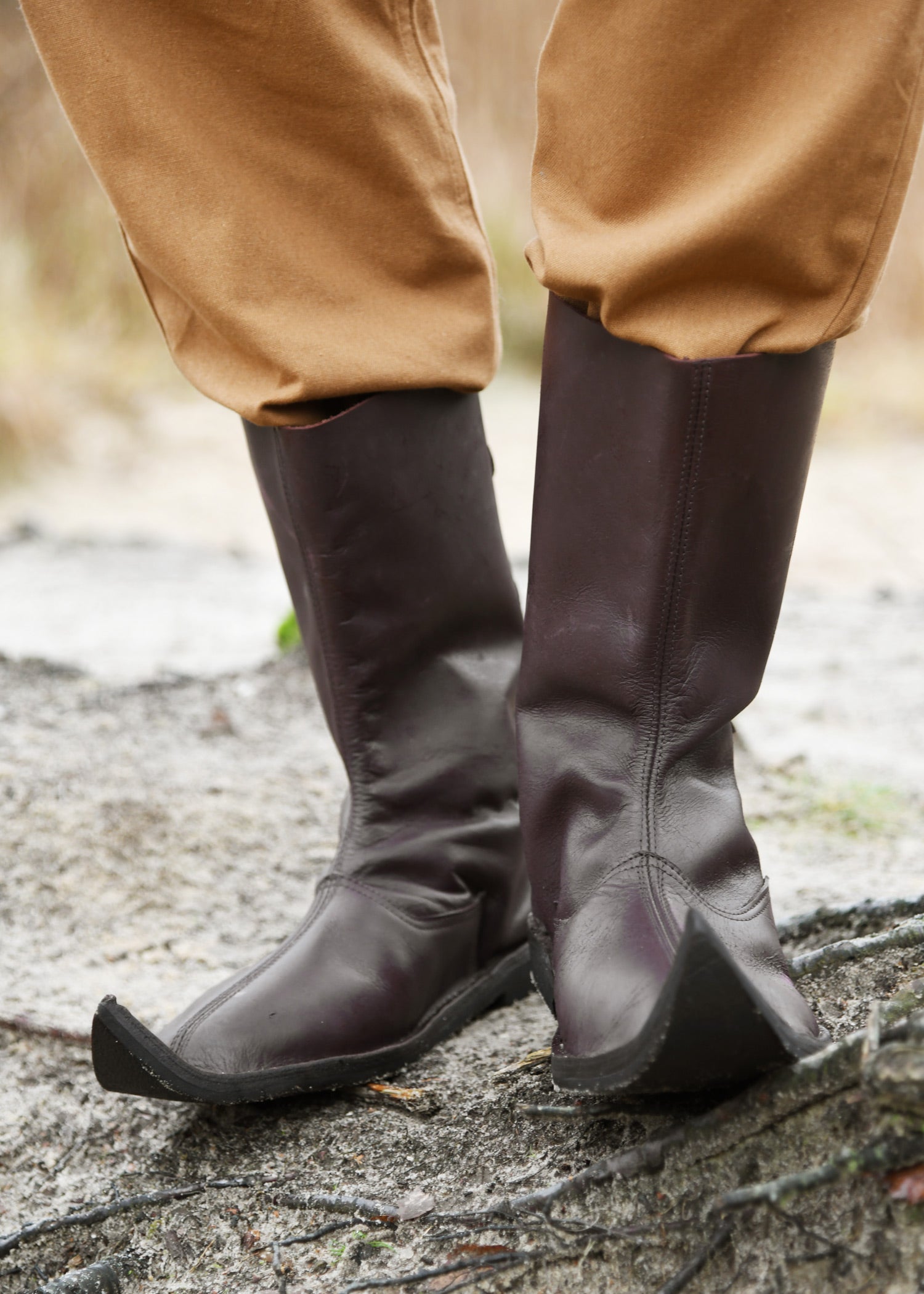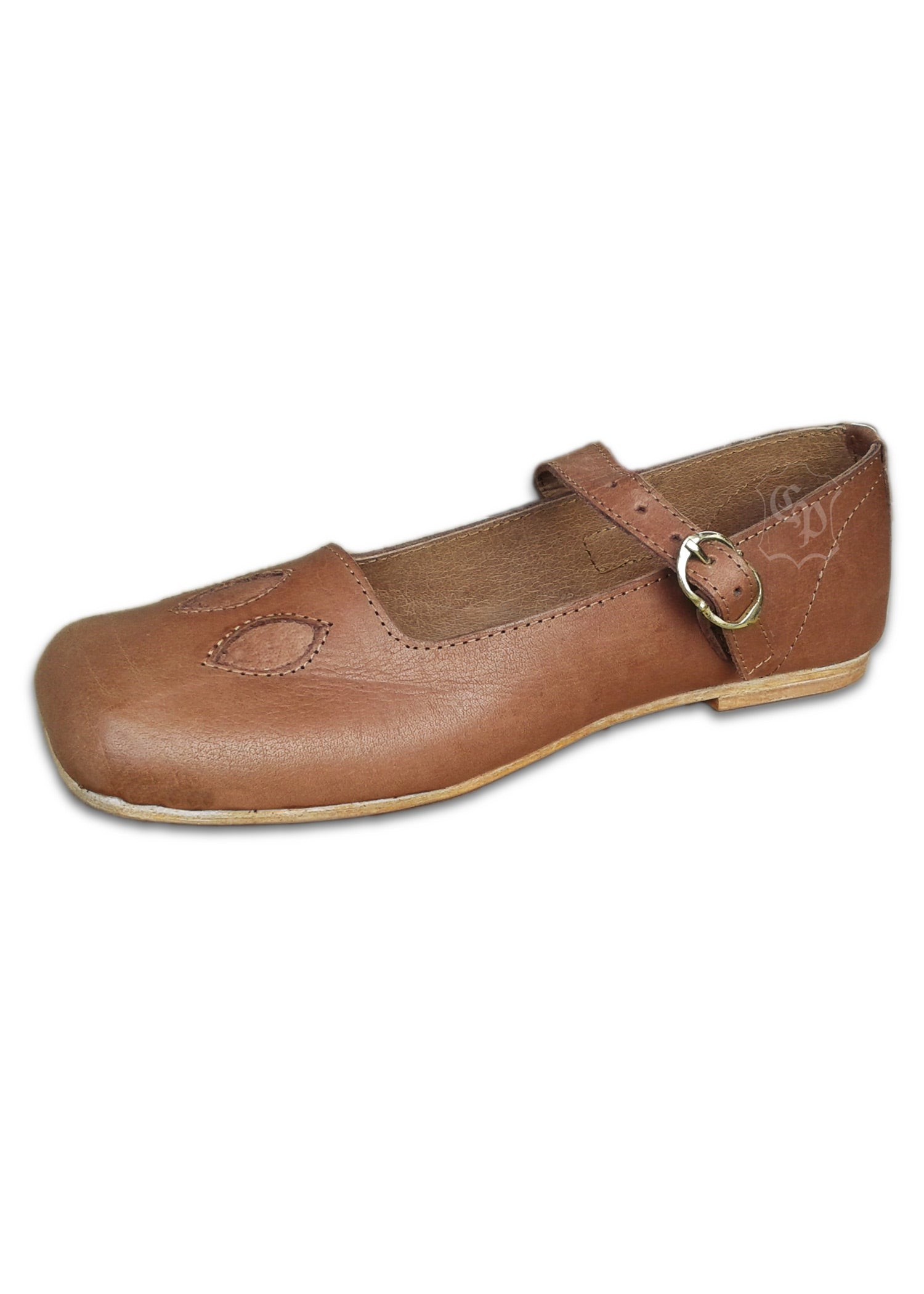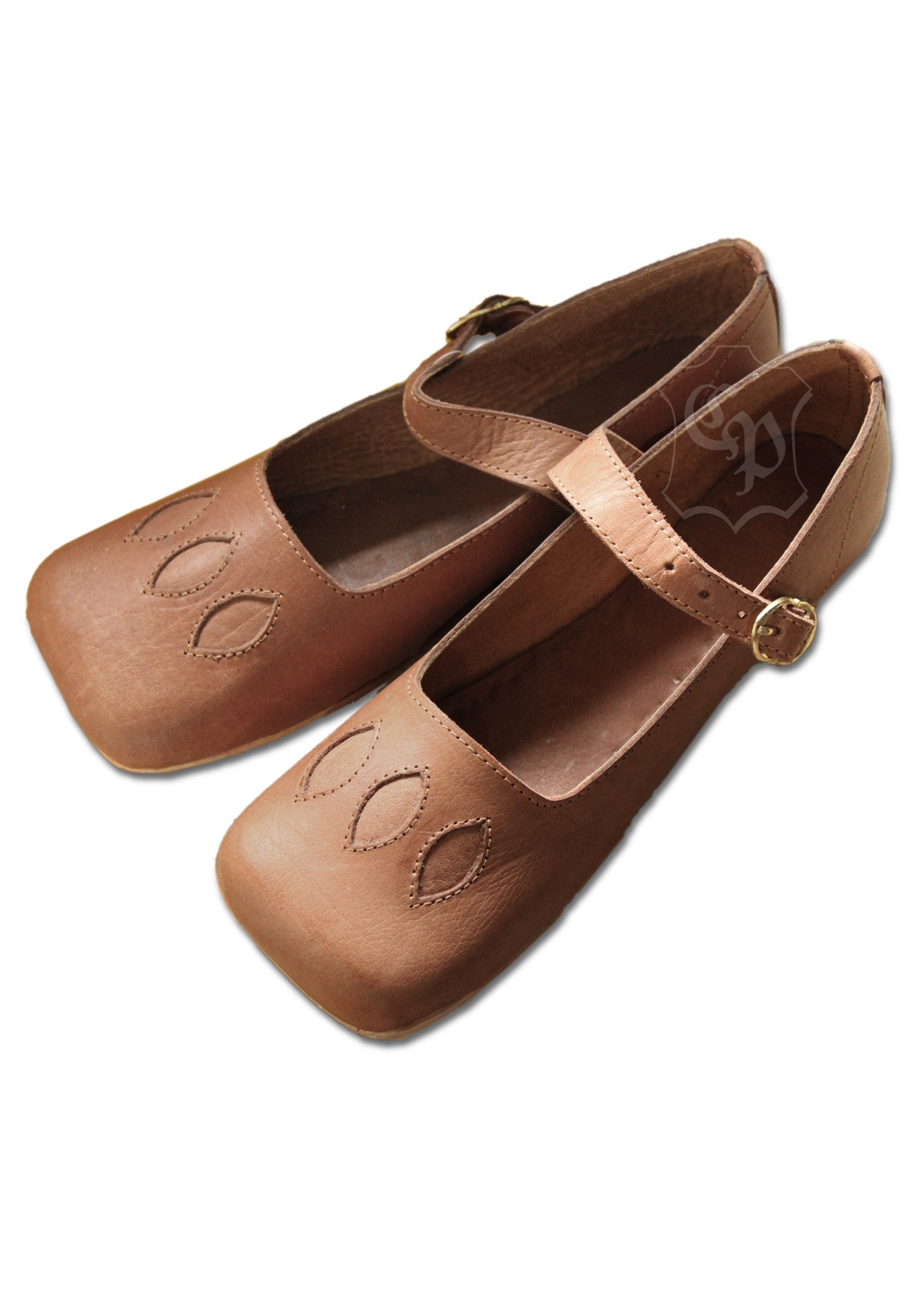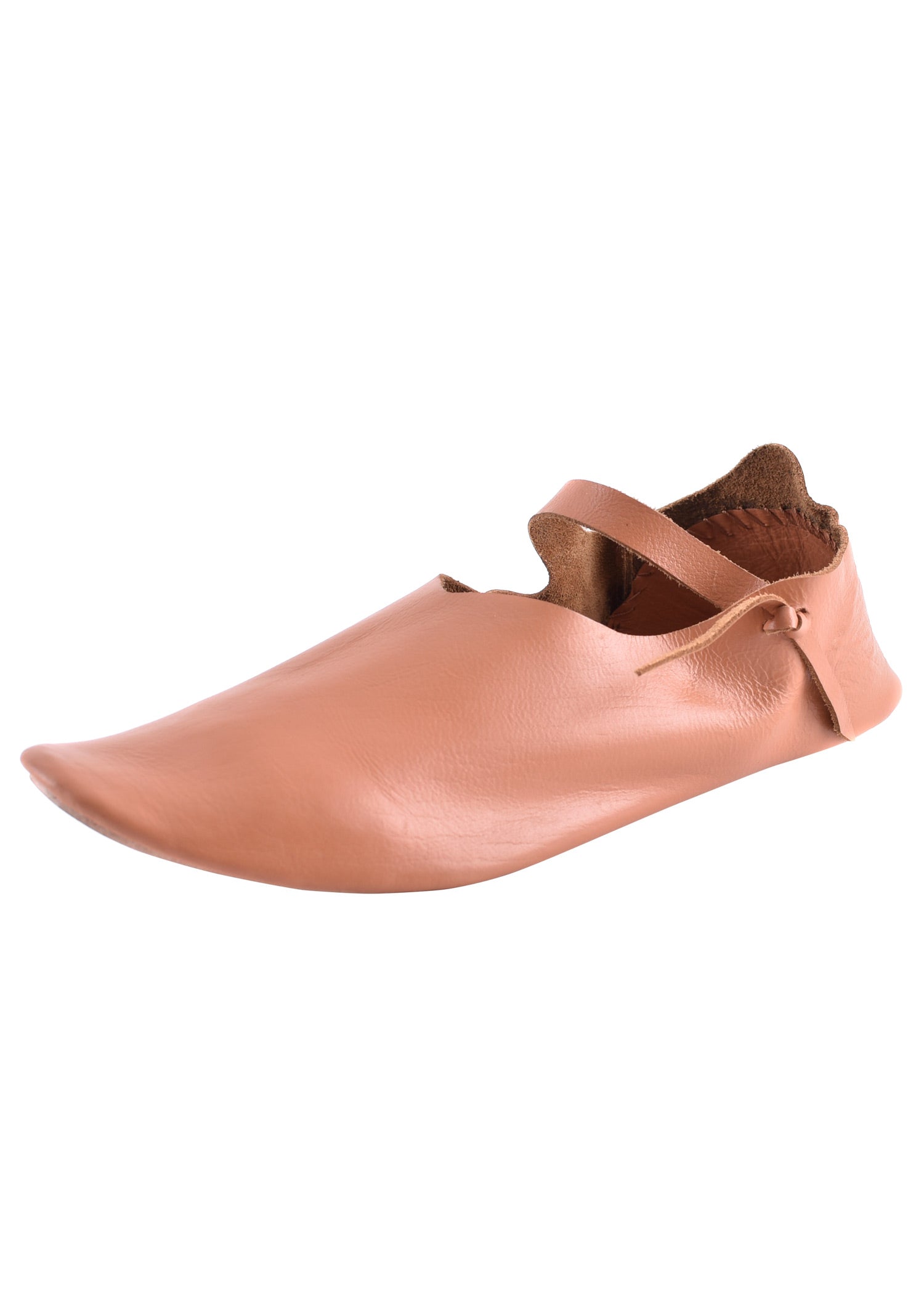Renaissance Footwear: Elegance and Distinction in Every Step
During the Renaissance (15th–17th centuries) , footwear ceased to be merely functional and became a symbol of status and fashion . The evolution of styles and materials allowed for the creation of ornate shoes and boots , influenced by the nobility and fashion of the European courts. From square-toed shoes to tall leather boots, Renaissance footwear reflected the refinement of the era.
Main types of Renaissance footwear
-
Square-toed shoes : Very popular in the 15th and 16th centuries, these shoes, for both men and women, had a wide, stiff toe box , often decorated with embroidery and rich fabrics.
-
Chapines : A raised shoe with a wooden or cork sole , worn especially by noble ladies. In Venice, chapines reached extreme heights, reflecting the wearer's status.
-
Soft leather shoes : Common among the working classes and the bourgeoisie, made of supple leather for everyday comfort.
-
High leather boots : Used by riders and soldiers, they reached the knee and were made of thick leather to offer protection and durability .
-
Slippers and slippers : Worn indoors by men and women of nobility, made of velvet, silk and with gold or silver embroidery .
-
Shoes with straps and buckles : During the 17th century, shoes with crossed straps or metal buckles became popular, adding a refined touch to men's clothing.
Materials and construction of Renaissance footwear.
-
Engineered leather : The most common material, with versions in supple leather for comfort and hardened leather for added protection.
-
Velvet and silk : Used in luxury shoes, mainly in the aristocracy and European courts.
-
Wood and cork : Used in chapines , especially in Italy and Spain, to raise the height and protect clothing from mud.
-
Embroidery and ornaments : The shoes of the nobility were richly decorated with embroidery, pearls and gold details .
Differences with footwear from other eras and cultures.
-
Greater emphasis on fashion : Unlike medieval footwear, which was more functional, during the Renaissance, beauty and ostentation were sought in shoes.
-
Influence of the nobility : While in other cultures footwear was kept simple, in the Renaissance it became a distinctive element of social status .
-
Use of more refined materials : Compared to the rough medieval shoes, Renaissance models incorporate luxurious fabrics and handcrafted details.
Renaissance footwear marked an era of refinement and distinction, reflecting the importance of fashion in society. If you're looking for authentic replicas of Renaissance footwear for historical reenactment, theater, or collecting , at Tienda Medieval you'll find pieces that evoke the elegance of this era.

